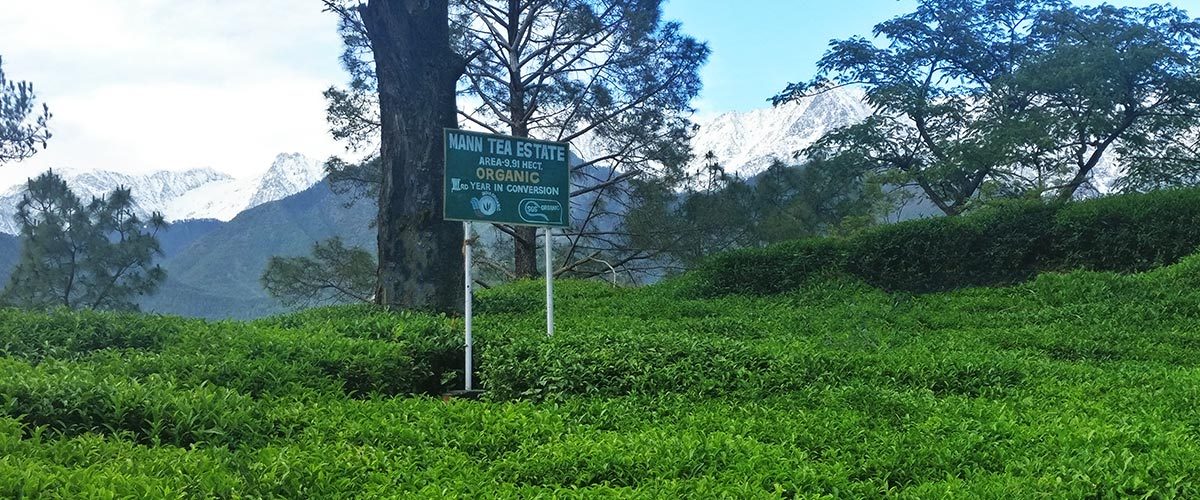The Kangra valley is famous for its unlikely but sizeable Tibetan community that’s made its home here. But as tea folks, what we know it for is the tea. It’s history began with the British East India Company but unlike Darjeeling, the valley struggled, after a devastating earthquake in 1905, to reclaim a sense of normalcy, and of course its industry.
One of the oldest tea companies here – from the pre-earthquake era – is the Dharmsala Tea Company that owns three of Kangra’s best-known estates – Mann, Hoodle and Towa. This year, the Company also received its organic certification. Anirudh Suri of the Dharmsala Tea Company, offers us a tour of their estates, and their teas.
“It is both rewarding and challenging to be a tea planter in Kangra. Given its long and unique history, for us locals, tea is a part of our land, our history and culture. As planters, we are proud to be upholding that heritage. But, it’s also true that given the global competitive nature of tea, planters in Kangra have lacked sufficient global exposure and marketing assistance in taking our teas to the same exalted status it once enjoyed. We’ve have had to work hard to build relationships globally with buyers, blenders, and influencers in the world of tea over the last few years. Thankfully, it’s starting to pay off.

In 1882, our ancestor, Gurdayal Singh Mann, bought a few estates to set up the Dharmsala Tea Company. For 135 years now, the company and these estates have been a part of the Mann family. We are sixth generation tea planters, making us one of the few estates in India that have remained with a single owner for this much time.
We own the Mann, Hoodle and Towa estates in the Dholadhar range of the Himalayas, between altitudes of 4,000-6,500 ft.

Tea from Kangra is often compared to Darjeeling tea. The black teas from both these regions, especially during the first flush, are fairly similar. Like the Darjeeling teas, Kangra first flush blacks tend to be greenish in appearance, and offer a light and bright cup to the tea lover. At the same time, Kangra teas do not have the typical muscatel touch that you find in Darjeeling teas. The Kangra teas have their unique features, a typical vegetal and earthy flavour that’s unmistakable.
Kangra’s tea gardens have been planted with both Chinese and Chinese-hybrid bushes. In these estates, most bushes are over a 100 years old. The Chinese hybrid bushes are organically regenerative in nature. That, coupled with regular pruning and other measures that we insist on, have maintained their overall wellbeing. Between Darjeeling and Kangra, we’d say the Chinese bushes fare well and yield better in Kangra.

Our factory came up in 1882, that has evolved over the years into an ISO and HACCP-certified factory. We make the base teas – black, green, oolong and white – along with several signature blends. Our strong tradition of handcrafted teas has meant a selection of hand-rolled oolong teas, white peony teas, lapsang souchongs, formosa pouchongs, and monkey king oolong tea.
The tea that made Kangra famous through the decades is its green tea. This region was the main source of supply of green tea to Central/ West Asia and Russia for the longest period. Some would go so far to say that these green teas are the best in India, largely driven by the nature of the bushes, the climate, and the long experience with making green teas. Standout features of the Kangra green tea are citrus-y and often nutty flavours, with very little bitterness.
Our personal favorites are the oolongs, another Kangra specialty. Handrolled, handcrafted, with a smooth, creamy flavor, more oriental in make.

The estate bungalow was built prior to the earthquake of 1905 after which, it underwent significant restoration. Over the years, it has hosted many distinguished people, British officials, actors -both Hollywood and Bollywood, politicians, filmmakers, singers, chefs, authors… more recently, the bungalow hosted a wedding, a first in its century-old history!
The people of these hills are referred to as pahadis – hill people. Pahadi life is about self-sufficiency. Here, people are content and happy, relying on local sources of livelihood. And tea, for generations, has been an important livelihood. Our world also includes the Tibetan community. Dharamsala is home to the Dalai Lama. And there are many tourists visiting here for spiritual guidance. It’s not uncommon to find Tibetan monks walking through our estates in the mornings, or evenings, to find solace or for quiet reflection.
Tea, it seems, lends itself for such moments.
Photo courtesy Dharmsala Tea Company

